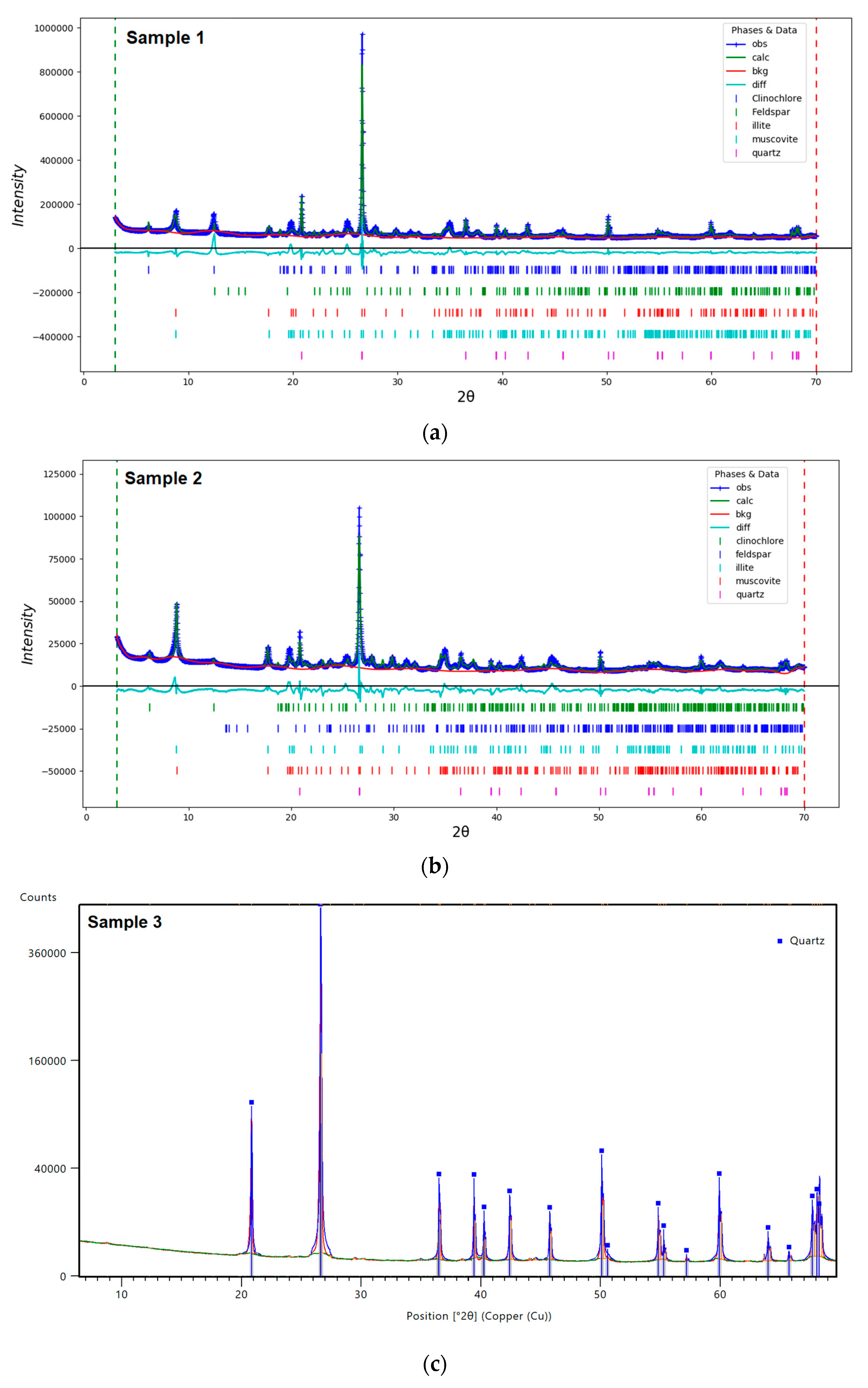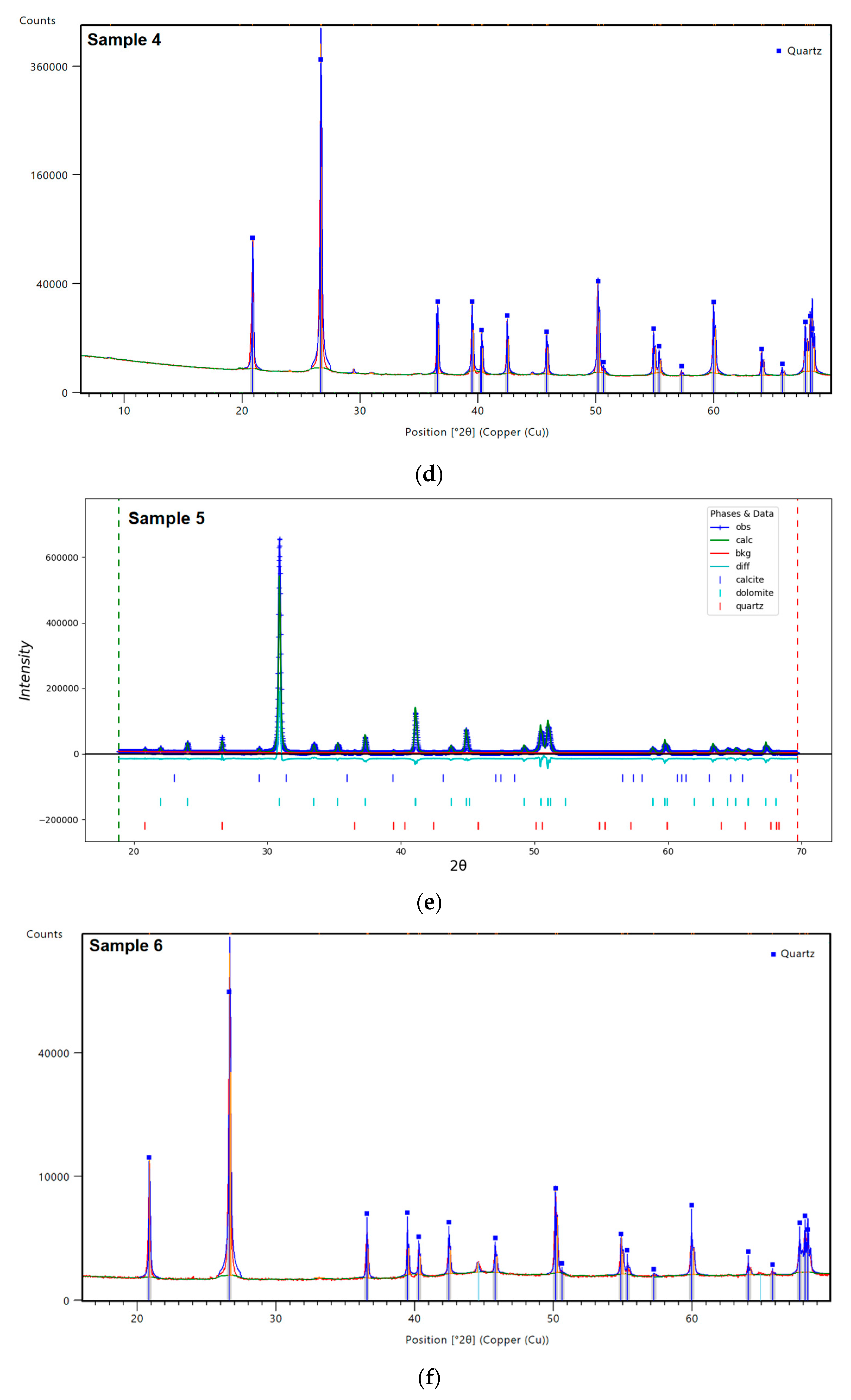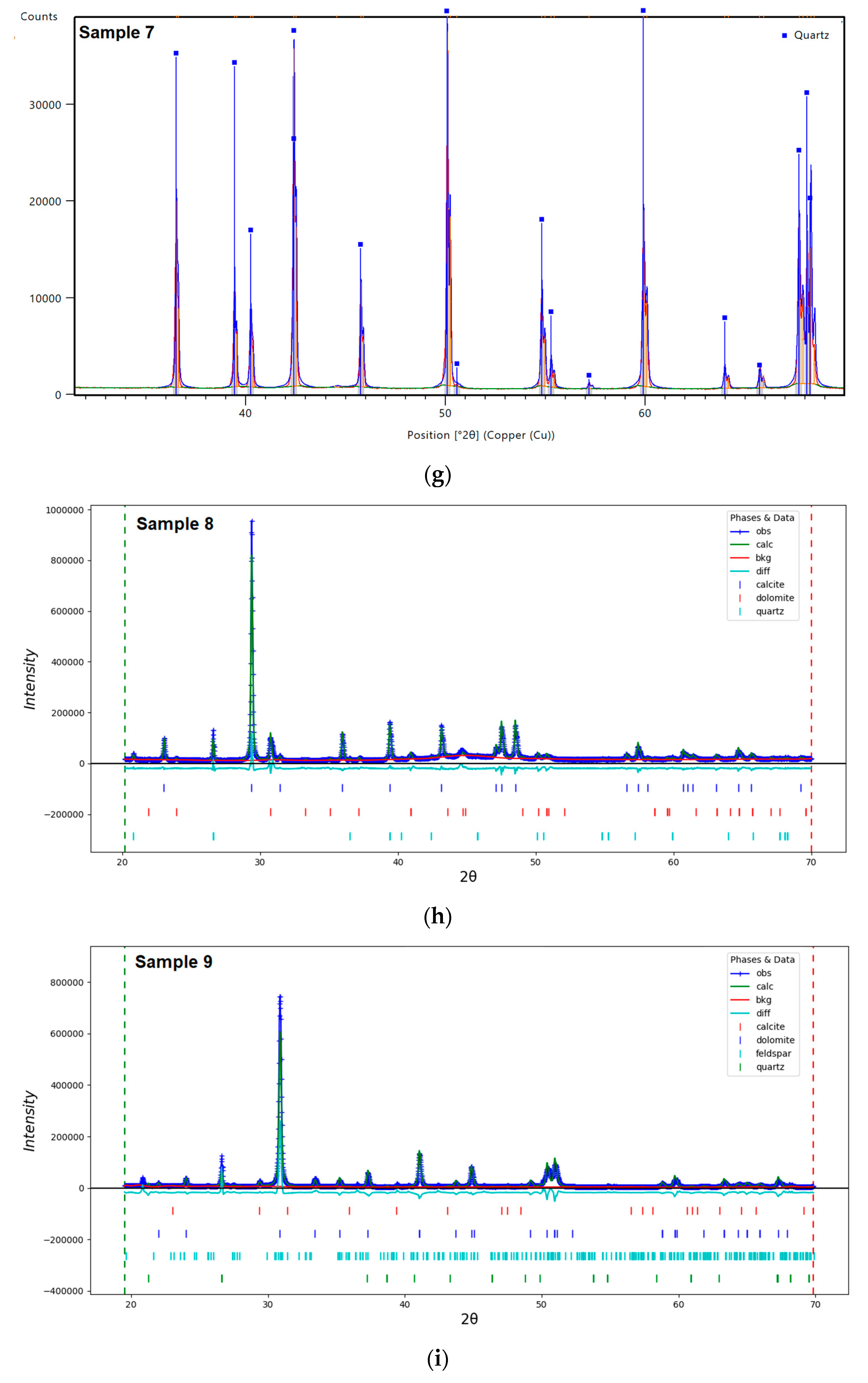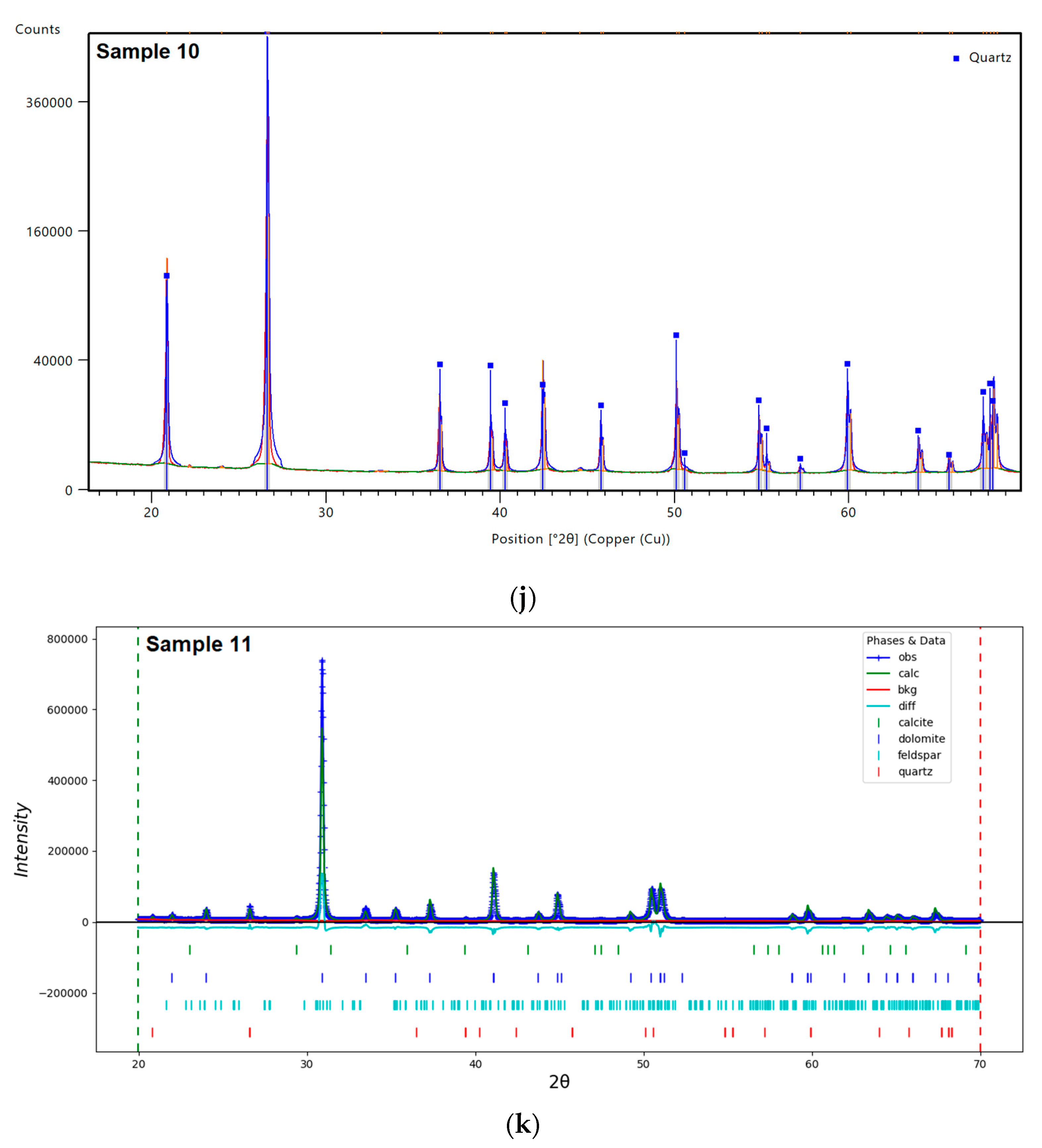1. Introduction
Geoheritage is a part of geodiversity that is assessed as worthy of geoconservation [
1]. Geoheritage and geoconservation are concerned with the preservation of Earth Science features, and are important endeavors globally, as reflected in various international and intra-national bodies set up for conservation, with agreements, conventions, and inter-governmental initiatives [
2]. Geological and geomorphological conservation (geoconservation) have a long history [
3]. Historically, the United Kingdom is considered the birthplace of geology, geoheritage, and geoconservation; both endeavors are integral components of education, tourism, planning and environmental management [
2,
4]. The search for representative sites has been a guiding principle for conservation site selection in the United Kingdom since the Second World War, and can also be detected as the basis for new site selection criteria in Ireland, the USA, and many other countries [
1,
4].
Geoparks are single, unified geographical areas where sites and landscapes of geological significance are managed with a holistic concept of protection, education, and sustainable development. The greatest strength of the geopark initiative is the attention it brings to Earth resources and the resulting socioeconomic development that occurs in rural areas [
5]. A geopark operates as a partnership of people and land managers working to promote Earth heritage through education and sustainable tourism [
6]. The purpose of a geopark is to explore, develop, and celebrate the links between the geological history and other aspects of the area’s natural and cultural heritage, and to enhance awareness and understanding of key issues facing society, such as using our Earth’s resources sustainably, mitigating the effects of climate change, and reducing natural disasters-related risks.
Geotourism has been recently recognized as an approach to tourism that embraces interpretation, education, is locally beneficial, and fosters protection of geoheritage [
7]. Geotourism and the cultural landscape involve complex interactions of cultural practices and values within geoparks as well as providing economic benefits from tourism activities. Geotourism and the cultural landscape also give rise to a range of relational benefits such as shaping people’s experiences that enhance well-being, mental and physical health, and self-awareness skills [
8].
Virginia is a state in the Southeastern and Mid-Atlantic regions of the United States that offers spectacular panoramas and a geologic history that spans nearly 1.5 billion years. Rocks exposed throughout the state reflect a long and complex geologic history that resulted in unique and exotic geologic terranes, which extends from the high rocky summits in the Blue Ridge Mountains to low-lying barrier islands exposed to the Atlantic Ocean. Across Virginia, the landscape exhibits all rock types: igneous, metamorphic, and sedimentary [
9].
Shenandoah National Park in north-central Virginia is 5- to 10-km wide with a very irregular boundary that encloses small portions of the Shenandoah Valley to the west and many of the lower Blue Ridge foothills to the east. The park occupies more than 700 km
2 and is characterized by diverse reliefs and geological structures. The park provides a look at a thick, mountain-forming sequence of volcanic rock that may be as much as 800 million years old. The Blue Ridge mountains in Shenandoah National Park lie entirely within the Blue Ridge physiographic province, the narrow mountainous area between the low-lying Piedmont province to the east and the Valley and Ridge physiographic province to the west. The Blue Ridge consists of broad mountains, interconnected by high gaps and saddles with many peaks, and sinuous, sharp-crested ridges. The present forms of the Blue Ridge are smooth and rounded except where an occasional quartzite ledge or basalt cliff breaks through the flourishing forest cover [
10]. The Blue Ridge rocks were folded, metamorphosed, and faulted 325 to 260 million years ago.
Some of the rocks exposed in the Shenandoah National Park date to over one billion years in age, making them among the oldest in Virginia. The ancient granitic basement rocks, the metamorphosed basalt rocks, and the sediments represent the three main geologic units found within the park. Bedrock in the park includes Grenville-age granitic basement rocks (1.2–1.0 billion years old) and a cover sequence of metamorphosed Neoproterozoic (570–550 million years old) sedimentary and volcanic rocks of the Swift Run and Catoctin formations. Clastic rocks of the Chilhowee Group are 542–520 million years old (early Cambrian age). Quaternary surficial deposits are common and cover much of the bedrock throughout the park [
10].
A rock garden was developed at the Edith J. Carrier Arboretum in Rockingham county, VA, USA, with the participation of undergraduate students who expect to pursue a career in the geosciences and science education. The Edith J. Carrier Arboretum provides a detailed overview on biodiversity in the Shenandoah Valley and Rockingham county, but a limited perspective on the rocks along the arboretum pathways and the geologic context. The rock garden at the Edith J. Carrier Arboretum is a place where rocks look as they did when they were part of an outcrop on the side of a mountain or a creek in the Shenandoah National Park. The rock garden potentially offers the opportunity to observe rocks and minerals from Virginia without having to travel too far. The mineralogical characterization and the geologic history of the rock slabs arranged along the pathways of the Edith J. Carrier Arboretum were the core of the present study. The present research aims to build an appreciation of mineral resources by communities living and working around the Shenandoah National Park. A walk along the pathways of the arboretum can inspire and educate visitors to explore the geologic history of the Appalachian Mountain region by experiencing the mineralogy of the rocks and by considering the geologic context.
2. Materials and Methods
2.1. Edith J. Carrier Arboretum and Rock Specimens
The Edith J. Carrier Arboretum (38°25′44″ N, 78°51′46″ W) is a 125-acre public urban garden and forested greenspace located in the eastern border of the James Madison University campus in Harrisonburg, VA. Of the 125-acre arboretum, 87 acres are wooded with hickory and oak trees. The arboretum preserves native plant species, provides opportunities for research, and promotes knowledge of the botanical and natural world for visitors of all ages. The Edith J. Carrier Arboretum serves over 1400 students per year on field trips for enriching botanical educational experiences with guided tours [
11].
Eleven rock specimens were collected along the major pathways in the Edith J. Carrier Arboretum, and GPS locations were recorded to design an ArcGIS map.
2.2. Powder X-ray Diffraction (PXRD)
Powder X-ray powder diffraction (PXRD) was used to identify the mineralogy of the eleven rock specimens. The analyses were performed at the Department of Geology and Environmental Science, James Madison University. X-ray patterns were collected at room temperature using a Malvern PANalytical Empyrean diffractometer equipped with an X’Celerator detector, and CuKα radiation (45 kV/40 mA). The incident beam optical module Malvern PANalytical Bragg-BrentanoHD was used to improve the peak-to-background ratio and increase intensity in measured spectra. Analyses of the samples were performed with spinner-mode analysis, a 2θ scan range between 3° and 70°, a step size of 0.02° 2θ, a divergence slit of 0.125°, and anti-scatter slits of 0.5°. The fitted peak width for collected data was about 0.01° 2θ.
Quantitative mineralogical analyses via the Rietveld method [
12] were carried out for selected samples using General Structure Analysis System-II (GSAS-II) software [
13].
2.3. Geological Setting of the Harrisonburg-Rockingham County Area, Virginia (U.S.A.)
Rockingham County is in the northwestern part of Virginia and extends from the Blue Ridge on the southeast to West Virginia on the northwest boundaries enclosing an area of 2127 km
2, mostly within the Appalachian Valley and Ridge province [
14].
Bedrock includes a suite of Grenvillian basement rocks (basalt, gneiss, and granitoid), Neoproterozoic metamorphosed sedimentary and volcanic rocks (quartzite and garnet-graphitic gneiss surrounded by orthogneiss and granitoid), and early Cambrian siliciclastic sedimentary rocks [
15]. The rocks of sedimentary origin have a maximum apparent thickness of 7.62 km. Limestone, shale, and dolostone occur extensively in Rockingham County. Deposits of iron, manganese, zinc ores, limestone, building stone, and natural gas are also found in the county [
14].
Precambrian rocks are located in the Blue Ridge to the SE and the Mississippian rocks occur in the western part of the Rockingham county. Precambrian rocks of the Blue Ridge consist of a complex of igneous and metamorphic rocks (metabasaltic greenstone with thin layers of meta-arkose, phyllite, and epiclastic breccia) known as a Catoctin formation [
16]. The Catoctin rocks are overlain by a sequence of sedimentary rocks (dolomites, limestones, and shales) known as the Chilhowee Group [
16]. On the NW side of the Blue Ridge are Lower Cambrian sandstone, shale, and quartzite succeeded by dolostone and limestone [
14].
The Shenandoah Valley (central part of Rockingham county) contains principally Cambrian and Ordovician limestones, dolomites, shales, and sandstones [
17]. Only the southern end of the Massanutten mountain lies within Rockingham County, where it ends abruptly in a peak that is visible over most of the region. Massanutten Mountain is a ridge of about 80 km that lies entirely in the Shenandoah Valley. Limestone and dolomite form the floor of the Shenandoah Valley and sandstone forms the crest of the Massanutten mountain range west of the park; shale underlies the lower slopes of the Massanutten mountain range [
10]. Well-cemented quartz arenites of Silurian age underlie the long linear ridges of the Massanutten Mountain complex. The rock layers in Massanutten Mountain are folded downward in a syncline that accounts for its peculiar canoe-shaped area between a double ridge. Like many of the mountains in western Virginia, erosion-resistant quartz-rich sandstone remained to give Massanutten Mountain its distinctive shape [
10,
15,
18].
The western part of Rockingham county consists mainly of Devonian and Mississippian sandstones and shales. A few basic magmatic intrusions in the form of dikes and sills and one wedge cut the Cambrian and Ordovician sedimentary rocks [
14].
2.4. Stratigraphy of Rockingham County, Virginia
In Rockingham County bedrock ranges in age from Precambrian to Mississippian with a maximum thickness of approximately 7 km for the sedimentary rocks. The Precambrian rocks (granodiorite, granitoid, and other altered igneous rocks) crop out in the Blue Ridge along the southeastern margin of the county [
14].
Overlying the Precambrian is a group of rocks of doubtful age, either Precambrian or Cambrian, which crops out at the crest and along the northwest flank of the Blue Ridge and is composed of rocks of igneous and sedimentary origin. Lower Cambrian shales, siltstones, sandstones, and quartzites are exposed along the northwest side of the Blue Ridge and rest on these older rocks.
The Shenandoah Valley is underlain principally by folded and faulted Cambrian and Ordovician dolomites, limestones, shales, and subordinate sandstones. About 8 km northwest of the foot of the Blue Ridge is the Massanutten synclinal complex, which has preserved Silurian and Devonian sandstones, shales, and limestones.
Little North Mountain consists mainly of steeply inclined Ordovician, Silurian, and Devonian sandstones, shales, and limestones. From Little North Mountain northwest to the West Virginia boundary is an area of chiefly Devonian and Mississippian sandstones and shales, but one anticline exposes Ordovician and Silurian sandstones, shales, and limestones. The folding to the northwest of Little North Mountain is commonly more gentle than that to the southeast of the mountain [
14]. For further details on the geologic units in Rockingham County and stratigraphic column, see [
19].
3. Results and Discussion
Every specimen collected represented an outstanding example of rocks of the Appalachian Mountains (
Figure 1). PXRD was chosen for mineralogic analysis because of its inherent ability to analyze fine-grained and impure complex crystalline mixtures such as sedimentary rocks. PXRD analyses were intended to establish the presence of specific minerals (qualitative analysis) and their percentage in weight (quantitative analysis via Rietveld method) (
Figure 2). X-ray diffraction is also rapid and accurate. Each crystalline component produces a characteristic pattern that can readily be distinguished from patterns of other components in a mixture. These characteristic patterns provide a qualitative identification of minerals in complex mixtures, as found in sedimentary rocks, wherever thin-section petrographic studies may not be feasible owing to the fine crystallite size and complexity of the mixture.
Table 1 summarizes the mineralogy, mineral weight percentages, and the rock type of the samples analyzed. Based on the mineralogy, the rock types found in this study are limestone, shale, dolostone, and quartzite. Sample 8 was classified as dolomitic limestone using the mineral weight percentages.
Documentation of the field location and geologic context were crucial for the correct interpretation of the analytical PXRD data (see Geological setting of the Harrisonburg-Rockingham County area, Virginia (U.S.A.)). Hence, the mineralogy of the rocks analyzed using PXRD was used to reconstruct the geographic location of the sample collected (
Table 1). All rocks are part of the geologic history of the Appalachians in the Harrisonburg-Rockingham County area (Virginia, U.S.A.). Cambrian and Ordovician limestone and dolostone form the floor of the Shenandoah Valley, whereas quartzite is exposed along the northwest side of the Blue Ridge. The sedimentary rocks developed as dolostone, limestone, and shale are overlain Precambrian granitic and metamorphic rocks. Granitic rocks where not found in the arboretum trails. Several samples of quartzite were found in the arboretum as part of the Chilhowee group (Weverton Formation, Harpers Formation, and Antietam Formation).
To localize the geologic units where the samples were analyzed belong (
Figure 3), a simplified geologic map was designed based on the U.S. Geological Survey (USGS) GIS database of geologic units, lithology, age, and structural features in Virginia [
20].
An ArcGIS map was designed based on the GPS location of the samples (
Table 2) collected to pinpoint the rock locations of specimens along the arboretum trails. The map was digitized over a satellite image of the Edith J. Carrier Arboretum using Adobe Illustrator (
Figure 4). The legend in the map was constructed from the analytical PXRD data. The map is used during guided tours at the Edith J. Carrier Arboretum and is made available to the public at the Visitor Center to help with locating the rock specimens along the arboretum trails.
The protection of the cultural heritage represents an interdisciplinary process at the intersection between art, history, science, policies for management, and exploitation [
6,
21]. Current geological activity in Shenandoah National Park is a result of natural and man-made forces acting on the surrounding mountains and valleys. People have lived in the Blue Ridge Mountains for at least 9000 years and the geology of the Blue Ridge greatly influenced the location of the settlements. The early mountain people and probably the Native Americans before them selected homesites where water, gentle slopes, and fertile soils were present [
10]. Local and foreign visitors alike do not generally recognize the impact of geological heritage, in particular mineralogy, on ecosystems and the development of cultures. This creates a need for educational programs that employ inventive communication techniques. The development of a rock garden at the Edith J. Carrier Arboretum aims to nurture interest in the geosciences as a prominent and lasting effective informal educational experience. Through different methods, the rock garden pushes to involve the general public, offering hands-on workshops free of charge to ensure that a sound basis in scientific disciplines is not just a privilege. The rock garden is also acting as an extension to an indoor mineral museum housed nearby, thus reaching a diverse public. The mineral museum features more than 600 unique and unusual crystal and gemstone specimens from all around the world. Two cases of the museum contain about 100 mineral specimens from Virginia. The mineralogy of the rock slabs in the arboretum aids to educate the community on the importance of minerals, develop an understanding of where rocks and minerals used in everyday life come from, improve the public perception of mineral resources, and promote responsible and sustainable use of natural resources.
To raise community awareness about the importance of local mineralogy as well as the interaction of the intrinsic properties of natural stones and environmental impact, a workshop focusing on the identification of minerals and rocks was proposed in 2018 for public education (children and adults) using the newly developed rock garden. The workshop provides several multidisciplinary activities involving interpretative processes based on the relationships between local mineralogy, rocks, soils, and plant growing. One of the workshop activities designed for children was a learning game aiming to identify different rocks based on the pictures of specimens displayed in the Edith J. Carrier Arboretum. Participants in a game received a photo of a rock in the Edith J. Carrier Arboretum and searched for the rock in the photograph. After the participants located the rock, children were encouraged to draw the rock using a clipboard, colored pencils, crayons, and then bring their drawing at the Visitor Center. A brief explanation of the minerals, the rock type, and geologic origin was provided. Participants who identified the rock correctly received a giveaway as a reward for participating. The outcomes of the activity included fostering a sense of wonder for minerals and rocks, being respectful of the environment, and gathering in a social environment.
4. Conclusions and Future Work
Sustainable tourism development needs to be integrated with best practice management to enhance the visitor experience, promote inclusive social integration, and protect natural resources and cultural heritage. What we see today in the Blue Ridge is a part of the geologic framework of the Earth’s crust being altered and partially exposed by geologic events, and the impact of climate and biological processes on the rock material that now forms the mountains. Education is a fundamental prerequisite for the achievement of sustainable tourism. Using examples of rock slabs from surrounding areas is a unique way for visitors to gain a better appreciation of geologic materials, their uses, and the local natural environment. Visitors have the educational and recreational opportunity to observe local rocks within a pleasant urban environment.
Shales and limestones are the most abundant sedimentary rocks throughout Rockingham county, but their mineralogical components are difficult to study thoroughly because of their fine-grained nature. Due to the inherent difficulty of analyzing fine-grained minerals in thin sections and hand specimens, this paper illustrates a method for rapid, feasible, and accurate quantitative mineralogical analysis of complex mixtures such as sedimentary rocks. The quantitative mineralogical analysis of the rock slabs allowed us to classify the samples precisely.
Further developments of the present project will pertain to the design of special educational materials. To make the visit at the rock garden an inclusive experience, the educational materials (guidebook and posters) will be accessible to individuals with impairments. Using a speech-to-text software, the guidebook will be converted to an audiobook and translated to several languages. A permanent mineral museum established in the area will implement the outreach activities of the Edith J. Carrier Arboretum in Rockingham county (Virginia, U.S.A.).















